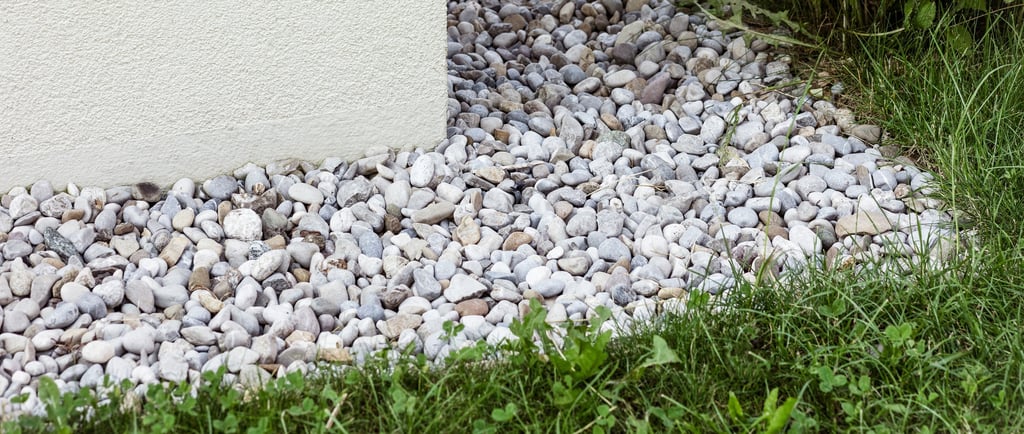Flood-Free Basements: The Ultimate Guide to Sump Pumps and French Drains
WASATCH FRONT PLUMBINGPREVENTIVE PLUMBING TIPSRESIDENTIAL PLUMBINGEMERGENCY PLUMBING
6/18/20255 min read


You know what’s not on anyone’s home renovation wishlist? A basement that smells like a swamp and feels like a fish tank. But when spring thaws hit Utah—or that freak August storm rolls through—many Wasatch Front homeowners find out too late that gravity isn’t on their side. Water always wins. Unless, of course, you’ve got the right defense system in place.
Enter: the sump pump and the French drain. This dynamic duo works behind the scenes to quietly redirect water away from your home’s foundation, preventing floods, mold, mildew, structural damage, and that dreaded wet carpet squish under your socks.
Whether you're building a new home in Herriman, retrofitting an old bungalow in Sugar House, or just sick of your unfinished basement doubling as an indoor lake—this guide will break it all down, local style.
Wait—Why Is My Basement Flooding in Utah?
Let’s start with the local reality check. Utah might be a desert state, but the Wasatch Front has plenty of surprises for homeowners:
Snowmelt + Clay Soil = Trouble. Snow builds up fast in the winter. Then spring comes, and meltwater has nowhere to go thanks to Utah’s notoriously poor-draining, clay-heavy soil.
Hardscaping Boom. Driveways, patios, and walkways are stylish and low maintenance, but they stop water from seeping naturally into the ground. Instead, it races toward your foundation.
Rising Water Table. In some parts of Salt Lake County, especially near creeks or rivers, the groundwater level is just waiting for a reason to rise—and your basement is the first stop.
Old Homes, No Drainage. Older homes in areas like Millcreek, South Salt Lake, and Murray were often built before proper drainage was a thing. You might not have any flood-prevention systems in place at all.
So if you’ve noticed puddles, wall seepage, musty smells, or an ominous dark stain creeping across your basement floor...don’t ignore it. Moisture isn’t just annoying—it’s destructive.
Meet the MVPs: Sump Pumps and French Drains
Here’s where our heroes enter the chat.
🌀 Sump Pump: The Water Eviction Specialist
A sump pump is your last line of defense. It’s installed in a pit (called a sump basin) at the lowest point of your basement or crawlspace. When water collects in the basin—either from natural groundwater or a connected drainage system—the pump kicks on and forcibly ejects that water through a discharge pipe, sending it far away from your foundation.
There are two main types:
Submersible pumps sit down in the basin, hidden away and quieter. Ideal for finished basements.
Pedestal pumps have the motor mounted above the basin, making them easier to maintain and repair.
Either way, your sump pump should meet these conditions:
Plugged into a GFCI outlet
Equipped with a check valve (so water doesn’t sneak back in)
Connected to a battery backup if you're serious about flood prevention. (Because guess when power outages love to happen? During storms.)
🌧️ French Drain: The Silent Collector
A French drain isn’t French. It’s not fancy. It doesn’t even come with a beret. What it is, however, is one of the most effective ways to divert water before it ever hits your basement.
Think of it as the moat around your castle.
A French drain is a gravel-filled trench with a perforated pipe at the bottom. It’s installed along the perimeter of your house (either outside or inside, depending on the situation) to collect water from oversaturated soil and move it away from your foundation—usually toward that trusty sump pump or a lower part of your property.
Which One Do I Need?
Here’s the plot twist: you probably need both.
A sump pump handles water that’s already arrived. A French drain handles water trying to get in.
If your home in Holladay is on a slope with poor grading, water might pool on one side of your foundation. A French drain can intercept it. But if water’s already made it into your basement, you need a sump pump to get it out.
Think of them as Batman and Robin. Peanut butter and jelly. The Jazz and fry sauce. One’s not much good without the other.
Local Factors: Why Wasatch Front Homes Need Extra Protection
Let’s get Utah-specific for a second:
✅ Spring runoff is no joke.
Those charming mountain views come with a cost. When the snow melts up Big Cottonwood Canyon, all that water needs to go somewhere. Spoiler alert: gravity brings it down to your backyard.
✅ Clay-heavy soil holds water.
The soil in areas like West Valley City, Taylorsville, and Kearns is great at retaining water—not so great at letting it drain. That’s why proper exterior grading and drainage systems are critical.
✅ Basement culture is real here.
Unlike homes in other parts of the country, Utah homes almost always come with a basement. And we finish them. Put bedrooms down there. Home theaters. Laundry rooms. Your kids' entire LEGO empire. Which means you can't afford water damage.
Installation Options: DIY or Call in the Pros?
Let’s be honest—digging a trench around your house and installing a pump that deals with potentially hundreds of gallons of water isn’t for the faint of heart. That said, here’s the breakdown:
When you can DIY a French drain
You’re installing it on the exterior (not inside your basement floor).
You have the right tools (trenchers, gravel, perforated pipe, landscape fabric).
You’re confident in your slope calculations. (No slope = no drainage.)
When you should call a pro
Your basement is already leaking.
You need an interior perimeter drain.
Your sump pump needs to tie into your electrical system or be placed in a difficult spot.
You’re in a high water table zone like Sandy or South Jordan, where mistakes can get expensive fast.
Maintenance Tips: Set It and Forget It? Not Quite.
Sump pumps and French drains are low maintenance, not no maintenance. Here’s how to keep them working when it matters most:
🌀 Sump Pumps:
Test it quarterly. Pour water into the pit and make sure it kicks on.
Check the float. It shouldn’t be stuck or jammed.
Clean the basin. Debris buildup can block the pump.
Inspect the discharge line. Ice, mud, or critters can clog it.
Replace every 7-10 years. Or sooner if it’s making weird noises or short-cycling.
🌧️ French Drains:
Keep surface grates clear. Leaves, mulch, and dirt love to clog up exterior entries.
Flush annually. A hose down the pipe can help dislodge sediment.
Check for signs of failure. Pooling water, plant die-off, or soggy soil means your drain might be overwhelmed or blocked.
What It Costs (Ballpark, Not Bait-and-Switch)
Prices vary, especially along the Wasatch Front, but here’s a general idea:
Sump pump install (basic): $3,500–$5,000
Interior French drain system: $4,000–$12,000
Exterior French drain: $25–$45 per linear foot (during construction phase)
Battery backup for sump: $300–$600
Remember: it’s cheaper than replacing your basement carpet, drywall, insulation, and family photo albums.
Final Word: Be Proactive, Not Reactive
Here’s the hard truth: If your basement has flooded once, it will probably flood again.
The weather isn’t getting more predictable. Snowpacks are inconsistent. Soil conditions are changing with new construction. And local homeowners are finishing basements at record rates, raising the stakes.
Installing a sump pump and/or French drain isn’t just a good idea—it’s home insurance with a motor and a trench.
Whether you live in Cottonwood Heights or Clearfield, now’s the time to ask the big question: Is your basement ready for the next storm?
Because when that rain hits, and your neighbors are panic-texting about wet floors, you’ll be the one chilling upstairs, dry as a bone, with a smug little grin and a fully functioning drainage system humming quietly in the background.
Contact
Main Office
Social
3560 S 2200 W
West Valley City, UT 84119
P.O. Box 25123
Salt Lake City, UT 84125
Monday – Friday:
7:00 am – 3:30 pm
Billing & Mailing Address
Hours
© Budd M. Rich Plumbing Company, DBA BRPI Mechanical. All rights reserved.
